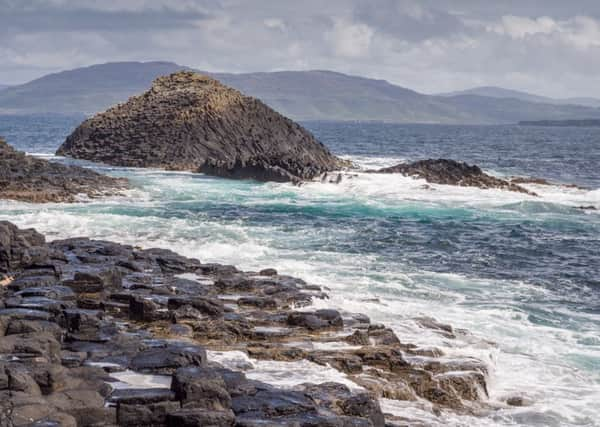Book review: Love of Country, by Madeleine Bunting


There is an elegiac strand, exemplified by writers like Helen MacDonald and Malachy Tallack. There is a metaphysical strand, best seen in Robert MacFarlane and Sara Maitland. And there is a political strand, of which James Rebanks and Rory Stewart would be examples. Madeleine Bunting’s Love Of Country is pensively poised between the second and third categories. It recounts several journeys to the Hebrides, beginning with the Holy Isle and Jura, and snaking its way up to Lewis and out to St Kilda. Her crisp and luminous prose is the ideal medium to capture the ambiguities and dichotomies of the landscape; between ever-shifting sea and unfathomably old rock; between tradition and modernity; between wilderness and depopulation; between feudal subsistence and aristocratic profligacy.
Bunting has a keen eye for a story, and there are many here that have been dealt with in more detail in other books. One could look to Jacqueline Riding or Murray Pittock for the Jacobites, to Karl Sabbagh’s A Rum Affair or Alastair Scott’s Eccentric Wealth for the interplay of botany and debauchery on Rum, to Alastair McIntosh on the “spiritual” legacy of the isles or the controversial Michael Fry on the Clearances. Bunting’s great achievement with this book is to weave these elements together rather than concentrate on particular examples.
Advertisement
Hide AdFor example, her chapter on Eriskay quite brilliantly links it as the landing point of Bonnie Prince Charlie, the scene of Ada Goodrich Freer’s problematic investigations into second sight for the Society for Psychical Research, and the grounding of the SS Politician which provided the inspiration for Compton Mackenzie’s Whisky Galore. “What strange re-ordering of historical narrative might we find if, instead of structuring it by when it happened, we structured history by where it happened,” she writes, “A history jumble sale, in which the odd, the delightful and the significant sit alongside each other.”
Most of Bunting’s journeys were taken just before and after the independence referendum, and she writes sensitively about the issue. Based in London, but having a long and emotional attachment to the area, she writes “it was no longer clear that I could call this north west part of the country home at all”. But she widens out to discuss belonging in more abstract and complex terms than a yes/no question. She contrasts the “island story” narrative of Britain with an “islands story”, an archipelago of identities. There is a very insightful comparison, when she is discussing the decline of Gaelic and how its loss erodes the speakers’ connections to their ancestors, with Orwell’s ending to 1984 (written on Jura) and Winston’s inability to remember his parents. The Lewis Chessmen, contested between the British Museum, Scotland, the Isles, Norway and latterly Iceland offers a case study of how vexatious and how long-lasting questions of identity and ownership are. The influence of Iona on a generation of Labour politicians is equally intelligently unpicked; likewise her description of Lord Leverhulme is neatly balanced between admiration for genuine philanthropy and bemusement at his autocratic diktats.
But as I said, this straddles the political and the metaphysical versions of the genre. Bunting repeatedly refers to her journeys as a “pilgrimage”, and has written one of the very few sane pieces about that other new genre, “the new atheism”. In part, she is more interested in the politics of religion in the area, and the way in which a secular mysticism surrounding Staffa and Fingal’s Cave, the “instructress of the world” of the Iona Community and the long-standing Catholic and Free Presbyterian communities actually manage to rub along not too shabbily. When writing about the natural world – particularly the ocean – her prose reaches its own kind of lyrical epiphany.
It seems to me that if the “new nature writing” – or rural psychogeography as I prefer to think of it – is to be something more than Fotherington-Thomas from the Molesworth books swooning over tormentil and machairs, then it requires Bunting’s engagement with questions of politics, religion, history, culture and our emotional responses. As the philosopher and polymath Raymond Tallis has observed “the biosphere has to be complemented with the memosphere: to take account of cultural evolution”. This splendid, precise and gracious book does that perfectly.
*Love Of Country by Madeleine Bunting, Granta, £18.99